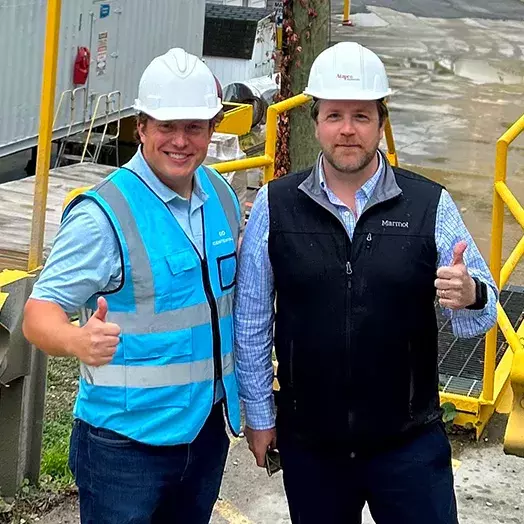In a commentary originally written for Fortune, Academic Program Director Seydina Fall offers his thoughts on AI and the future of cities.

AI and the future of cities
Seventy percent of the world’s population will live in cities by 2050, and that huge number makes urban planning more challenging. As a result, planners have turned to technology, most recently generative AI, to help design, analyze, and develop overcrowded areas.
Enthusiasts envision urban planners using AI to review development proposals, analyze proposed zoning changes, and develop new city master plans or optimize existing ones.
In one recent test case, Virginia Tech professors used generative AI to determine the walkability of an area by using AI tools to analyze images for built environment features like benches, streetlights, and sidewalks. To the extent AI can take over such simple, but labor-intensive tasks, urban planners would perhaps have increased bandwidth to work on more complex problems facing cities—problems such as affordable housing, climate change, and the declining office sector.
The integration of generative AI into the digitalization of urban planning, also known as “PlanTech,” is not without its challenges, though, and the question remains: can AI offer enough value to justify its use?
The cost of building and running AI infrastructure is enormous, both in monetary and environmental terms. If generative AI can only solve the small problems, not the big ones, then municipalities may question whether these expenditures are worth it. Also, in light of their field’s long, tangled history when it comes to inequality, urban planners may be particularly sensitive to concerns about biased training data leading to biased generative AI models.
What to Read Next

alumni success
Carey alumni work together to bring clean energy to BaltimoreHave previous technological advancements improved cities?
Despite the tremendous efficiency gains PlanTech has achieved, it is sometimes perceived as part of a constellation of “cool” but gimmicky applications that improve certain aspects of urban life but fail to solve real problems, such as public health crises and burgeoning housing costs.
One of the first widespread attempts to integrate cutting-edge technologies into modern urban planning was the rise of “smart cities” in the early 2000s. Smart cities utilize information and communication technology (ICT), such as 3D imaging and information modeling, to improve the quality of urban services. San Francisco, for example, has implemented a smart waste management system that uses sensors and internet-connected devices to optimize the collection and disposal of waste.
While smart cities’ use of technology has led to efficiency gains, it is unclear that this translates into an improved quality of life for their citizens. After the COVID-19 pandemic, academics wanted to find out if the smartest cities performed better in managing the pandemic. They looked at municipalities that ranked high on “smart city” indicators such as the environment, mobility, urban planning, and transportation, and concluded that the highest ranked cities did not necessarily manage the pandemic better.
There are also concerns that the focus of smart cities on modeling and algorithms may disadvantage those aspects of urban life that are not easy to measure quantitatively.
A more recent wave of technological innovation in urban planning involves a concept called “digital twins,” which are real-time virtual models of urban areas, ranging from a building to an entire city. Much like how NASA uses digital spacecraft simulators to train astronauts and mission control crews, these digital twin simulations allow urban planners test their designs and land use plans before they are implemented.
Municipalities can use digital twins to explore the impact of natural disasters, like a 100-year flood or extreme heat events, and develop a response. Using a digital twin, it is possible to model new buildings or regions and test them under many different scenarios before the actual development is built.
While digital twins hold the promise of predicting future challenges and enabling planners to develop resilient solutions, some obstacles stand in the way of widespread adoption. Among the most challenging is the difficulty of developing and maintaining a digital twin simulation. These simulations often require a vast amount of data, which is drawn from a wide range of sources and stored in formats that are not necessarily compatible.
The larger and more complex the region being simulated, the more challenging it is to integrate all of the necessary data, much less keep it up-to-date. In addition, as with smart cities, there is always the concern that not all facets of the urban landscape can be quantified and plugged into a model.
The need for human capital
The market for advanced technological tools for urban planning is expected to grow, as it has with the development of AI. While these technologies may assist urban planners, they are unlikely to replace them.
Urban planners are not to be confused with technocrats. Planners are tasked with improving the lives of city dwellers, which requires a multidisciplinary approach that encompasses not only the nuts and bolts of making land use decisions, but also social sciences, ethics, and public health. The planning profession is likely to face more technological disruptions in the future. To stay relevant, it needs to embrace complexity and not settle for low-hanging short-term efficiency gains.


